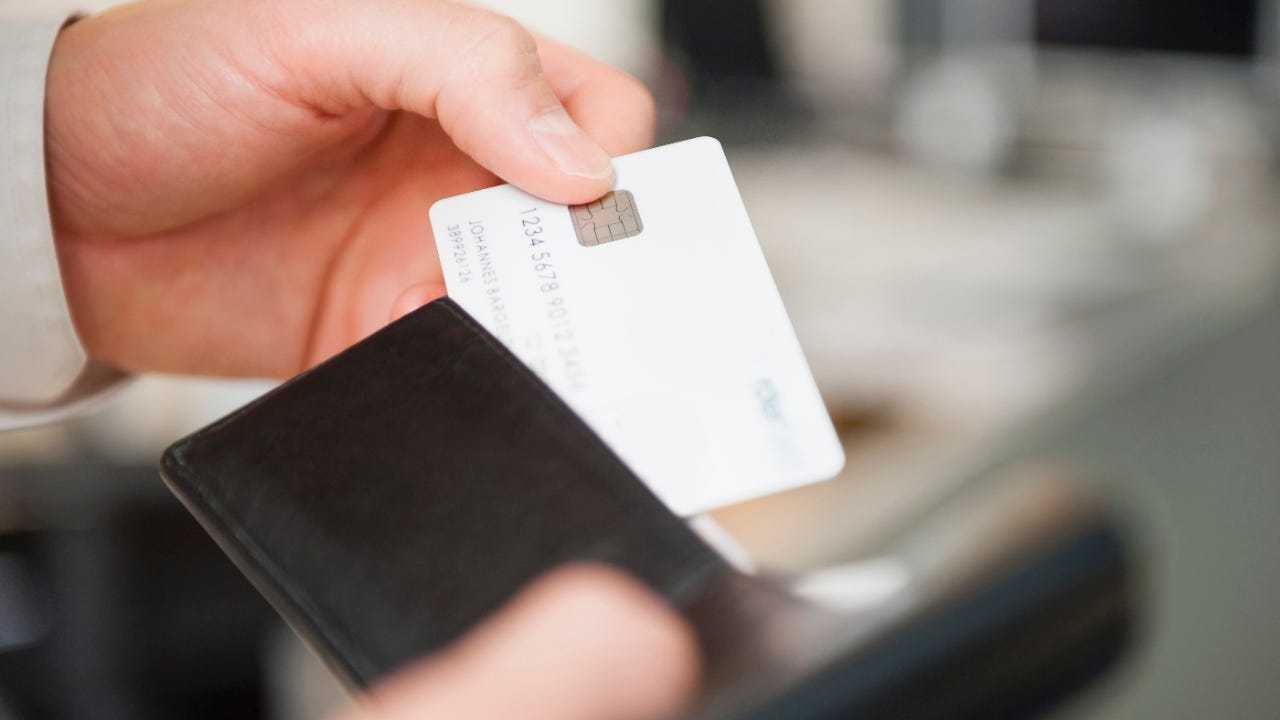What do the numbers on your credit card mean?

The Bankrate promise
At Bankrate we strive to help you make smarter financial decisions. While we adhere to strict , this post may contain references to products from our partners. Here's an explanation for . The content on this page is accurate as of the posting date; however, some of the offers mentioned may have expired. Terms apply to the offers listed on this page. Any opinions, analyses, reviews or recommendations expressed in this article are those of the author’s alone, and have not been reviewed, approved or otherwise endorsed by any card issuer.
When you make a purchase, the 15 or 16-digit number on the front of your credit card plays a crucial role in authenticating the transaction. This is because credit card numbers are structured so you can identify the payment network, cardholder and more.
The sequence of digits incorporates a validation check, too. These characteristics, along with other security features, mean your credit card isn’t just a source of convenience, but also a powerful form of identification.
How do I read my credit card number?
Credit cards linked to major payment networks like Visa, Mastercard and Discover have card numbers that are 16 digits long. American Express credit cards, on the other hand, have 15 digits.
The first digit is an industry identifier, or Major Industry Identifier (MII). If it’s between numbers two to six, then the card has been issued by a banking or finance organization. This digit also reveals the card’s payment network. For example, cards beginning with “4” are part of the Visa network. A few other MIIs include:
- 1: Airlines
- 2: Airlines and Financial
- 3: Travel and Entertainment (includes Amex)
- 4: Banking and Financial (includes Visa)
- 5: Banking and Financial (includes Mastercard)
- 6: Merchandising and Banking (includes Discover)
- 7: Petroleum
- 8: Healthcare and Communications
- 9: Government
When you combine the industry identifier with the next five digits, you can work out who the card issuer is, as well as the product the card relates to. These are considered the card’s Issuer Identification Number (IIN), or Bank Identification Number (BIN). The seventh to the 15th digit (or 14th for American Express) form a unique sequence to identify the cardholder. Finally, the last digit is known as a “check” digit. This is based on a mathematical formula, and it confirms the validity of the card.
Card issuers by number
The first six digits
- American Express credit card numbers are 15 digits long and begin with the number 3
- Visa credit card numbers are 16 digits long and begin with the number 4
- Mastercard credit card numbers are 16 digits long and most begin with the number 5
- Discover credit card numbers are 16 digits long and begin with the number 6
The next five digits
- Visa uses numbers 2 through 6
- Mastercard uses numbers 2 and 3, or 2 through 4, 5, or 6
- American Express uses numbers 3 and 4
Is my credit card account number the same as my card number?
Your credit card account number forms part of your card number, but the two are not the same; a credit card account number is shorter and unique to you.
How does a credit card account number work?
Your account number is a set of numbers up to 12 digits long that identifies you as the owner of the credit card account. It’s assigned by the financial institution issuing the card.
The account number on the card begins with the seventh digit and ends on the second to last digit. So, to find a Discover account number you would look at the long number on the front of your card and cross out the first six digits, as well as the last one.
While your credit card number may change if your card is lost or stolen, your account number stays the same. Also, for American Express customers, a card issued to an additional cardholder will have different card numbers than the main cardholder, even though both cards are linked to the same account.
What is a credit card security code?
A credit card security code is often called the CVV, which stands for Card Verification Value.
Requiring a CVV when making purchases helps verify the credit card is in your possession. This extra barrier against fraud is necessary because unlike in-person transactions, you can’t be asked to produce a valid ID or to enter your card’s PIN when shopping remotely.
A CVV can be a three or four-digit number. For Visa, Mastercard and Discover cards, you’ll find the three-digit CVV code on the back of your card. The security code for American Express cards is located on the front and is four-digits long.
Different payment networks call the CVV different names. It’s referred to as “CVV2” for Visa and “CVC” or “CVC2” for Mastercard. Discover calls it “CVD” or “CID,” and American Express uses the term “CID” or “CSC.”
What’s special about CVV is that retailers are not allowed to store them. So, even if hackers get a hold of your credit card number in a data breach, they won’t be able to use it for Internet or telephone purchases.
Why do credit cards expire?
Having to type in the expiration date of your credit card adds a further layer of protection against fraud. Criminals will not be able to take advantage of a stolen credit card number without its expiration details.
Credit cards suffer wear and tear from frequent use, too, so getting a new card every few years ensures you’ve got a card that works well and has the latest security features.
Related Articles



